Your basket is currently empty!

Halloween traditions in the British Isles
Halloween – All Hallow’s Eve, the night where the veil is thinner. Ghosts and skeletons, witches and monsters come out to play. The usual order is upended. A scary time, but filled with fun for those who dare!
There are many traditions in the UK and the Republic of Ireland that centre around this time of year, when the nights are longer and the days turn darker. The date of these celebrations and traditions might be “close enough” to the 31st of October but the mood is the same – scary folk horror, big bonfires, and a party to keep out the chill.
Older traditions
A Celtic tradition, (and also the Irish and Scottish Gaelic name for November), Samhain was a festival to celebrate the end of harvest and ward off bad spirits. Wiccan and Druidic practitioners today maintain their version of these rites.
In Wales, Nos Galan Gaeaf was the night before the first day of winter (1st of November) and villagers would mark their names or signs on a rock and place them around a bonfire. At the dying of the fire, they would rush home to avoid Yr Hwch Ddu Gwta (a headless lady with a tailless black sow) or Y Ladi Wen (the White Lady) who might chase them and devour their souls. The next day a harvest feast made up for all the fright, and the stones around the fire were checked for omens.
Hop-tu-Naa or Oie Houney on the Isle of Man is another version of Samhain, with people going around the houses with a turnip lantern singing traditional songs and dancing. Cakes were baked and predictions were made using the ashes from the hearth.
In fact, traditions for this time of year seem to be as many as there are regions! The different varieties reflect very similar ideas, however. The end of harvest, the beginning of winter, the wish to protect people from bad spirits or bad fortune.
When Christianity spread across the British Isles, many of the pagan traditions were “officially” superseded by more solemn remembrances for the departed. All Hallows’ Eve became a time of prayer and contemplation.
The folk traditions of the past have persisted, though, and evolved into what you can see today.
The Victorians fell in love with all things Gothic, so more horror elements seeped into the folk traditions including telling ghost stories.
Carving of pumpkins or other veg
The harvest festivals have been and gone at the end of summer. The produce left, pumpkins, mangelwurzels, turnips and other root and gourd veg are all tough enough to last for weeks or months, and keep people fed through winter. And some of them are carved into cunning and frightening lanterns.
The last Thursday of October is the date for Punkie Night in Hinton St George, in Devon. Children dress up and carry carved lanterns (originally large turnip-like vegetables called mangel-wurzels but now often pumpkins) and sing a traditional song.
Some of our members have carved various veg here.
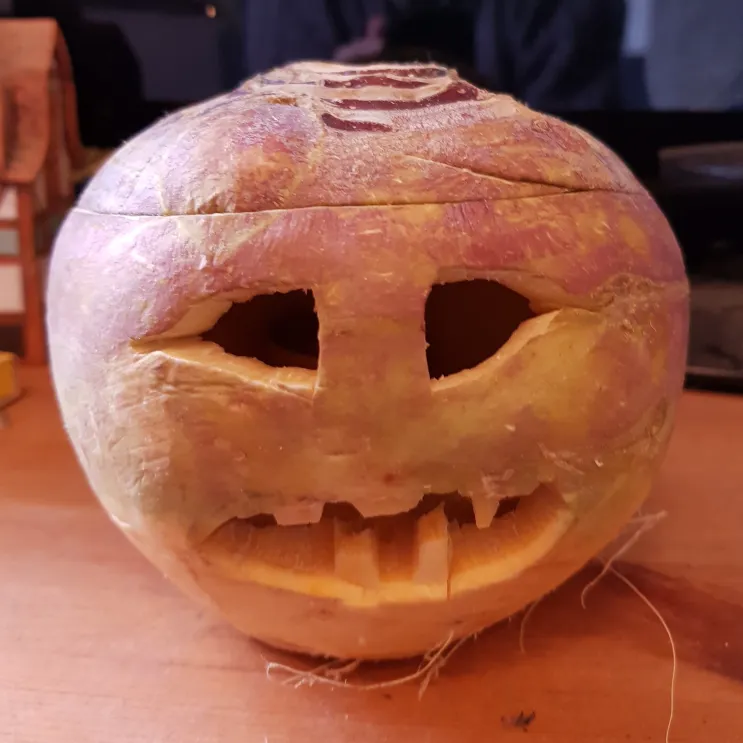
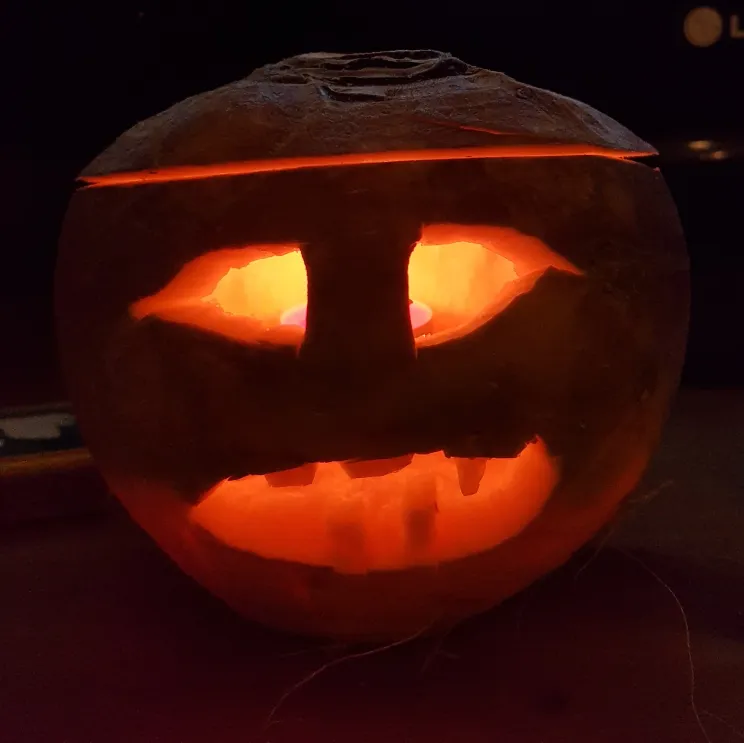
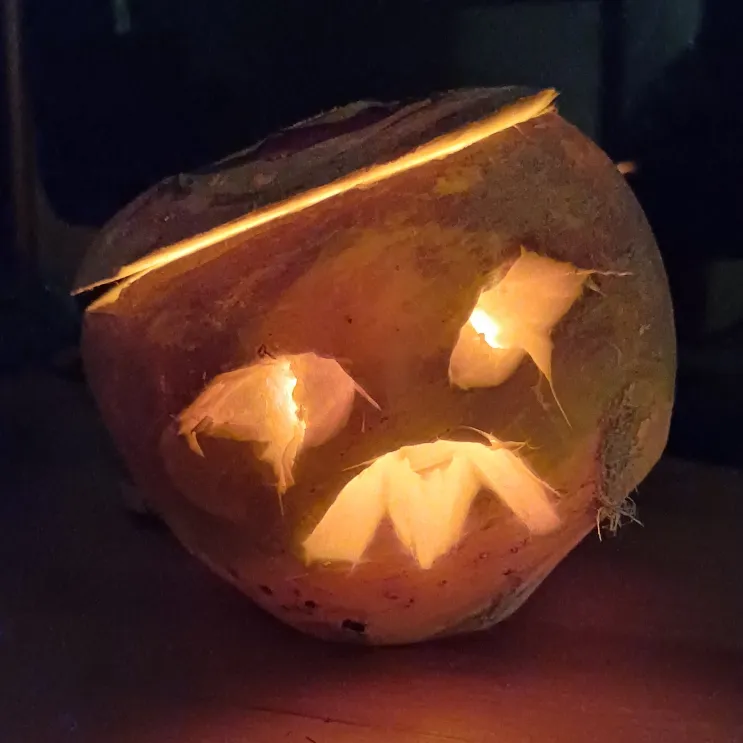
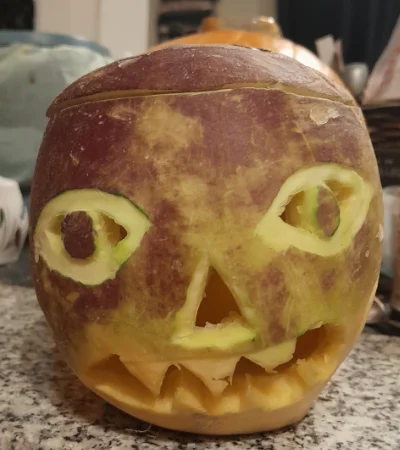
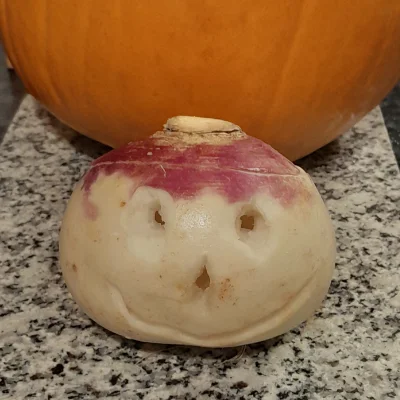
Apple games
Apples are a winter fruit so it makes sense to see them around this time of year alongside the pumpkins and root veg.
Bobbing / Ducking / Dooking for apples, (often known as dunking for apples in North America), is a party game for kids or grownups who don’t mind looking silly. A big bucket or basin of water has apples floated on the surface and participants try to grab an apple with their teeth. No hands are allowed and a lot of people get very wet faces – waterproof Halloween makeup is a must, not just for the winter rain! Another version, snap-apple, saw apples suspended from strings. The peel of an apple won in such games could be thrown over the shoulder to spell the initial letter of the name of the person you would marry.
Souling / Mumming / Hoodening
“Souling” was a traditional name for activities at this time of year in parts of Britain, including singing, dancing, dressing up and going door to door. “Mummers” or strolling players would put on short plays for locals in towns and villages. Sometimes accompanied by hobby horses or hooden horses, these skits offered another anarchic break from the winter gloom and gently mocked the confines of social order. Soul cakes (or harcakes) are a tradition still found in parts of northern England and were traditionally given out to people who came to the door, singing souling songs. Showing the mix of pagan and Christian rituals, the cakes could be marked with crosses, to represent ideas of Christian charity and prayer. Souling can still be found in parts of Britain, often revived to add a local flavour and community into the mix of festivities.
Bonfire night
Usually around the 5th of November, bonfires are often to commemorate the foiling of the Gunpowder Plot. “Guys” – human shaped effigies that represent the most infamous of the plot, Guy Fawkes – are often thrown into the flames, however other effigies are also common. The practice of building a large bonfire to ward off the coming winter’s chill is much older, however. Fending off evil spirits, as always, is a historical root, though not many people still follow this tradition so literally! These days a big bonfire event can be accompanied with carnival parades and rides, firework displays, sausages in buns, and toffee apples. Since it’s so close in date to Halloween, some places may combine celebratory events into one big night of festivity.
Costumes / Guising
Dressing up at this time of year has a long tradition. Originally designed to confuse evil spirits who might roam at the time when the lines between worlds blurred, dressing up has evolved into something more like North American traditions where costumes are humorous, represent favourite cartoon characters, or delightfully disturbing monsters.
People dress up for Halloween parties, local public festivities, and trick or treating in the UK and Ireland. You will see witches, mummies, werewolves, or other horror tropes. And, of course, there is the tradition of dressing up as various “sexy” versions of anything from doctors to vampires.
In Scotland, the children who dress up and visit neighbours are expected to earn their sweets with a joke, song, or even just a funny face, which is known as “Guising” (the same root as disguise).
In other parts of the UK, it can look more like the North American version of Trick or Treat, and TV and film has certainly provided some cross-pollination of the ideas of what it is all about, but kids dressing up and getting fistfuls of fun sized chocolates to put in a bag or bucket are pretty much universal results.
Adults like dressing up and Halloween, too! Some of our committee members have shared their scary or fun Halloween costumes for you.
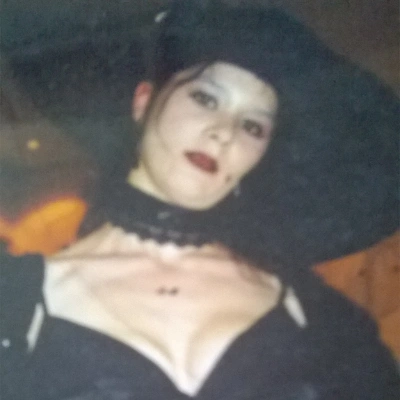
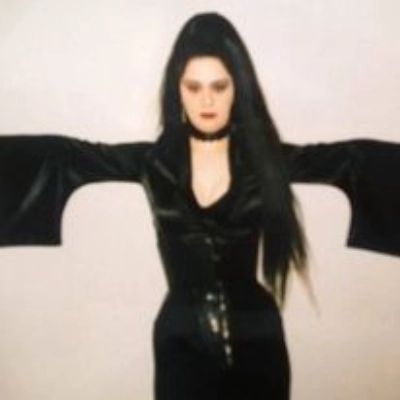
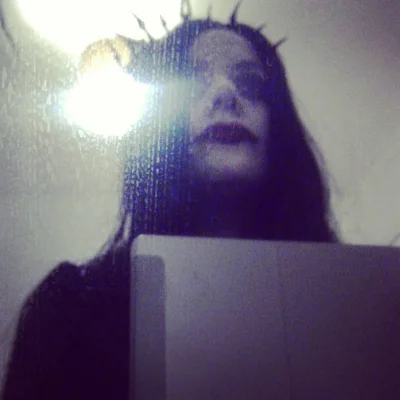
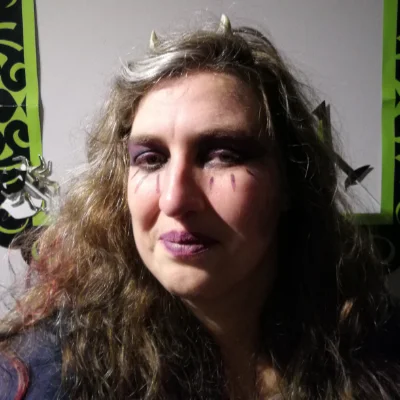
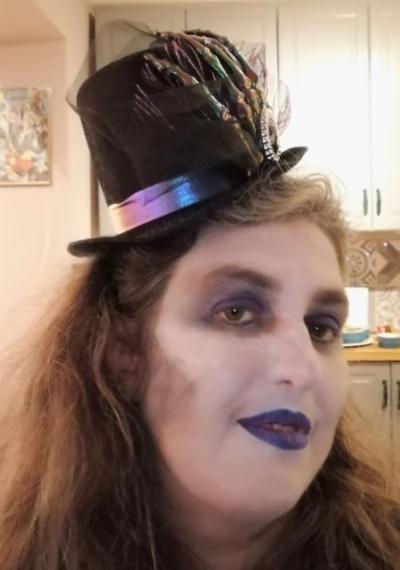
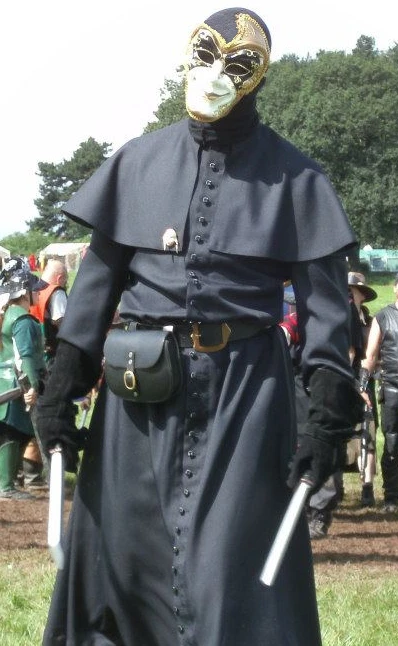
Halloween at World Fantasy
Sadly, costume is not encouraged at World Fantasy. Cosplay and costume has never been part of the convention’s ethos. A few themed accessories, perhaps, would be okay, but if you wish to do full dress-up, there are many venues in the lively Brighton scene that will be accustomed to Halloween costumes on the 31st.
Check out our Things to Do page for info.
NB Not all of the events around this time of year are free from problematic heritage. Some of the displays have traditions that can be highly offensive to modern eyes, so be aware before you go of what you might encounter before deciding.
In addition, as a multicultural country, not all people in the UK celebrate Halloween. Religious or cultural practices mean that some find allusions to black magic and spirits unpalatable. Bear this in mind when planning your activities.
Tags:
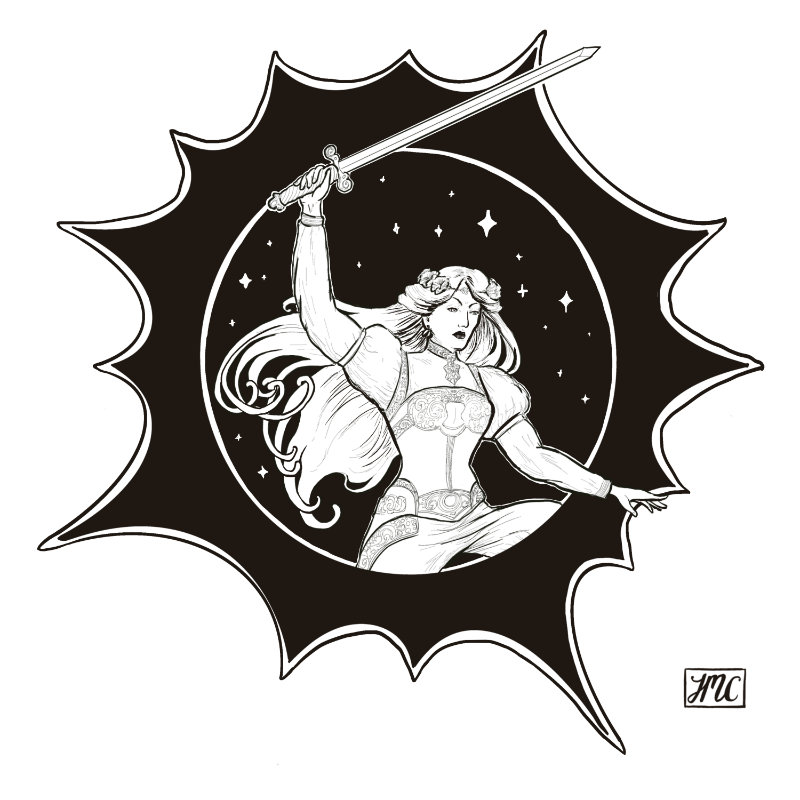
Leave a Reply